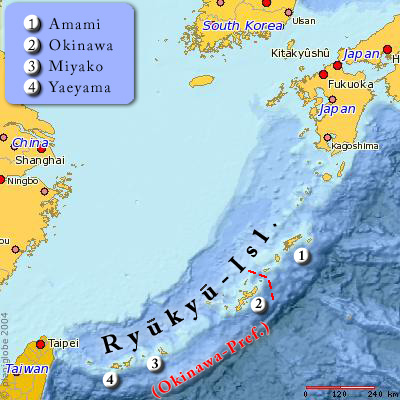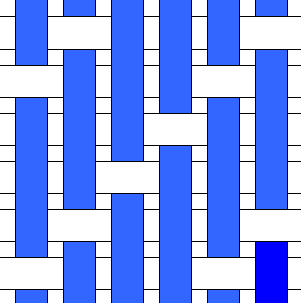|
ŇĆshima-tsumugi
ŇĆshima-tsumugi is a traditional craft textile produced in the Amami Islands (mainly Amami ŇĆshima) in southern Kagoshima Prefecture, Japan. It is a hand-woven plain-weave silk cloth dyed in mud. The textile is most commonly used for making kimonos. Oshima-tsumugi kimonos are often simply called ŇĆshima. Outline Some consider ŇĆshima-tsumugi one of the three finest textiles in the world (along with French Gobelin weaving, and Persian carpets in Iran). ŇĆshima-tsumugi has a long history of about 1,300 years. ŇĆshima-tsumugi is known for being supple, lightweight, and wrinkle-resistant. ŇĆshima-tsumugi kimonos are also traditionally dyed using mud and a dye produced from the bark of the Techigi Tree (Rhaphiolepis umbellata) Indigo and other natural dyes as well as synthetic dyes are also used. Due to its hardwearing nature, it is often said that up to three generations can wear the same kimono. ŇĆshima-tsumugi kimono are hugely valued for their detailed kasuri patterns and deep ... [...More Info...] [...Related Items...] OR: [Wikipedia] [Google] [Baidu] |
List Of Traditional Crafts Of Japan
The is a series of Japanese crafts specially recognized and designated as such by the Ministry of Economy, Trade and Industry, Minister of Economy, Trade and Industry (formerly, the Ministry of International Trade and Industry, Minister of International Trade and Industry) in accordance with the 1974 . As of 17 October 2024, 243 crafts have been so designated. Background As set out in Article 1 of the 1974 Act, the purpose of Traditional Craft industries and their promotion is to enrich the lives of the citizens and, due to their particular geographic nature, contribute to the development of local economies and, thereby, that of the nation as a whole. This economic angle helps distinguish the designation of Traditional Crafts under the 1974 Act from that of traditional crafts as Intangible Cultural Property (Japan), Intangible Cultural Properties under the Cultural Property (Japan)#Present 1950 Law for the Protection of Cultural Properties, 1950 Law for the Protection of Cultural ... [...More Info...] [...Related Items...] OR: [Wikipedia] [Google] [Baidu] |
Kimono
The is a traditional Japanese garment and the national dress of Japan. The kimono is a wrapped-front garment with square sleeves and a rectangular body, and is worn Garment collars in hanfu#Youren (right lapel), left side wrapped over right, unless the wearer is deceased. The kimono is traditionally worn with a broad sash, called an , and is commonly worn with accessories such as zŇćri sandals and socks. Kimonos have a set method of construction and are typically made from a long, narrow bolt of cloth known as a , though Western-style fabric bolts are also sometimes used. There are different types of kimono for men, women, and children, varying based on the occasion, Seasonal Wardrobe Change in Japan, the season, the wearer's age, and ‚Äď less commonly in the modern day ‚Äď the wearer's marital status. Despite the kimono's reputation as a formal and difficult-to-wear garment, there are types of kimono suitable for both formal and informal occasions. The way a person wear ... [...More Info...] [...Related Items...] OR: [Wikipedia] [Google] [Baidu] |
Rhaphiolepis Umbellata
''Rhaphiolepis umbellata'' or Sexton's bride is a species of flowering plant in the family Rosaceae, native to Korea, Japan and Taiwan. Growing to tall and wide, it is an evergreen shrub with glossy oval leaves, and scented white flowers, sometimes tinged with pink, in early summer. This plant has gained the Royal Horticultural Society's Award of Garden Merit. It is used in Japan as an astringent and a dyeing agent. The bark contains (‚ąí)-catechin 7-O-ő≤-d-glucopyranoside Catechin-7-''O''-glucoside is a flavan-3-ol glycoside formed from catechin. Natural occurrences Catechin-7-''O''-glucoside can be isolated from the hemolymph of the European pine sawfly ('' Neodiprion sertifer''). It also occurs in relatively ... and (+)-catechin 5-0-ő≤-d-glucopyranoside. Uses Known as Sharinbai (ŤĽäŤľ™śĘÖ) in Japan and as Techigi in Amami Oshima, this plant is used to create a dye to create the highly valued ŇĆshima-tsumugi kimono. The bark of the tree is chopped into chips and bo ... [...More Info...] [...Related Items...] OR: [Wikipedia] [Google] [Baidu] |
Kasuri
is the Japanese language, Japanese term for fabric that has been woven with fibers dyeing, dyed specifically to create patterns and images in the fabric, typically referring to fabrics produced within Japan using this technique. It is a form of ikat dyeing, traditionally resulting in patterns characterized by their blurred or brushed appearance. The warp and weft threads are resist-dyed in specific patterns prior to dyeing, with sections of the warp and weft yarns tightly wrapped with thread to protect them from the dye. When weaving, woven together, the undyed areas interlace to form patterns, with many variations ‚Äď including highly pictographic and multi-colored results ‚Äď possible to achieve. patterns may be applied to either the warp or the weft, or to both in order to create a resulting woven pattern, with the cloth classified using different names depending on the method used. Etymology Though commonly confused, the terms (ÁĶ£) and (ťäėšĽô) are not interchangeable. ... [...More Info...] [...Related Items...] OR: [Wikipedia] [Google] [Baidu] |
Amami Islands
The The name ''Amami-guntŇć'' was standardized on February 15, 2010. Prior to that, another name, ''Amami shotŇć'' (Ś•ĄÁĺéŤęłŚ≥∂), was also used. is a Japanese archipelago in the Satsunan Islands, which is part of the Ryukyu Islands, and is southwest of Kyushu. Administratively, the group belongs to Kagoshima Prefecture, Japan. The Geospatial Information Authority of Japan and the Japan Coast Guard agreed on February 15, 2010, to use the name of for the Amami Islands. Prior to that, was also used. The name of Amami is probably cognate with , the goddess of creation in the Ryukyuan religion#Ryukyuan creation myth, Ryukyuan creation myth. Geography The Amami Islands are limestone islands of coralline origin and have a total area of approximately , of which constitute the city (''-shi'') of Amami, and constitute the district (''-gun'') of Oshima. The highest elevation is ''Yuwandake'' with a height of on Amami ŇĆshima. The islands have a humid subtropical climate (K√∂ppen clima ... [...More Info...] [...Related Items...] OR: [Wikipedia] [Google] [Baidu] |
Tanaka Isson
Tanaka Takashi (ÁĒįšł≠ Ś≠Ě, 22 July 1908 ‚Äď 11 September 1977), known by his art name , was a Japanese ''Nihonga'' painter from the ShŇćwa period noted for his flower-and-bird paintings of the Amami Islands. Biography He was born in what is now Tochigi City, Tochigi Prefecture, as the son of a local sculptor. Interested in art at an early age, he won his first award for a watercolor painting at the age of 7. In 1926, he enrolled in the ''Tokyo Bijutsu Gakko'' (the predecessor to the Tokyo National University of Fine Arts and Music), where he specialized in Nihonga painting, but left after a few months without graduating due to his father's illness and lack of funds. From 1938, he lived at various locations in Chiba Prefecture, and although his future initially seemed promising, his isolation from the mainstream art circles meant that he had difficulty in establishing a name. He was forced to work at numerous odd jobs to stay alive, while attempting to paint on the side. In the ... [...More Info...] [...Related Items...] OR: [Wikipedia] [Google] [Baidu] |
Twill
Twill is a type of textile Textile is an Hyponymy and hypernymy, umbrella term that includes various Fiber, fiber-based materials, including fibers, yarns, Staple (textiles)#Filament fiber, filaments, Thread (yarn), threads, and different types of #Fabric, fabric. ... weave with a pattern of parallel, diagonal ribs. It is one of three fundamental types of weave, along with plain weave and satin. It is made by passing the weft thread over one or more warp threads then under two or more warp threads and so on, with a "step", or offset, between rows to create the characteristic diagonal pattern. Due to this structure, twill generally drapes well. Classification Twill weaves can be classified from four points of view: # According to the stepping: #* ''Warp-way'': 3/1 warp way twill, etc. #* ''Weft-way'': 2/3 weft way twill, etc. # According to the direction of twill lines on the face of the fabric: #* ''S-twill'', or ''left-hand twill weave'': 2/1 S, etc. #* ' ... [...More Info...] [...Related Items...] OR: [Wikipedia] [Google] [Baidu] |
Plain Weave
Plain weave (also called tabby weave, linen weave or taffeta weave) is the most basic of three fundamental types of textile weaving, weaves (along with satin weave and twill). It is strong and hard-wearing, and is used for fashion and furnishing fabrics. Fabrics with a plain weave are generally strong, durable, and have a smooth surface. They are often used for a variety of applications, including clothing, home textiles, and industrial fabrics. In plain weave cloth, the warp (weaving), warp and weft threads cross at right angles, aligned so they form a simple criss-cross pattern. Each weft thread crosses the warp threads by going over one, then under the next, and so on. The next weft thread goes under the warp threads that its neighbor went over, and vice versa. * Balanced plain weaves are fabrics in which the warp and weft are made of threads of the same weight (size) and the same number of Units of textile measurement#Ends per inch, ends per inch as Units of textile meas ... [...More Info...] [...Related Items...] OR: [Wikipedia] [Google] [Baidu] |
Sotetsu (Sago Palm) In Amami
The , or , is a private railway company operating three lines in Kanagawa Prefecture, Japan. It is a wholly owned subsidiary of holding company SŇćtetsu Holdings, Inc. SŇćtetsu Holdings is listed on the Tokyo Stock Exchange; 6.58% of it is owned by the Odakyu Electric Railway Company. Overview Sagami Railway is one of the core companies of the SŇćtetsu group. SŇćtetsu focuses on railway operations, although formerly it had a more diversified set of holdings, such as bus lines and supermarkets. SŇćtetsu is the smallest company of the "Big 15" private railways in Japan, as it has only short lines, but it succeeded in developing towns along its lines in the 1960s and 1970s, with many passengers riding this line. In May 1990, SŇćtetsu joined the major railways. In 2010 it had a daily ridership of 623,500 Lines The company operates three passenger (commuter) lines and a freight-only line. All lines are electrified. All the railroads owned or operated by SŇćtetsu are entirely wit ... [...More Info...] [...Related Items...] OR: [Wikipedia] [Google] [Baidu] |





